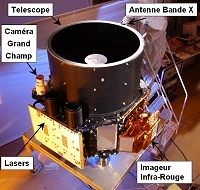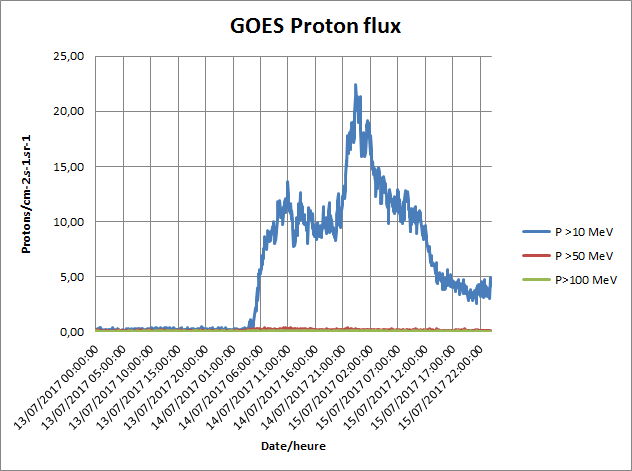The Calipso satellite has been studying clouds and aerosols since 2006. Special care has to be taken for its lidar, which is vulnerable to solar flares. On 14 July 2017, the Sun was exceptionally active and put the emergency CNES teams on edge.
Soaring 705 km above our heads, Calipso is a mini-satellite based on the Proteus spacecraft bus. Its mission is to study the effects of clouds and aerosols on our planet’s climate. Aerosols are fine liquid or solid particles suspended in our atmosphere, varying from 1 nm to a few micrometres in size; they can occur naturally or be emitted by human activity.
Calipso's Primary instrument: the lidar
To fulfil its mission, Calipso carries a visible-light camera and a multispectral infrared camera. But its primary instrument is a lidar (Light/laser Detection And Ranging); this device is designed to locate and study distant objects by analysing a beam of light emitted by the lidar and reflected by the target object.
Calipso is equipped with a polarisation-sensitive backscattering lidar operating on 2 wavelengths (visible light and infrared). Its main components are a laser and a telescope. The laser emits light impulses towards the Earth’s surface, which are then reflected by the atmosphere and captured by the telescope. The telescope detects distinct signatures which allow the instrument to determine precisely the altitude and radiative characteristics of clouds and aerosol layers.
The Calipso mission is a joint project by CNES and NASA. Day-to-day operations are handled by CNES while NASA manages the payload and provides CNES with the necessary commands. And as always, operational personnel handle routine activities but also have to deal with potential complications to the best of their ability!
A sensitive lidar
Given the vulnerability of the instrument’s MOSFETs (metal-oxide-semiconductor field-effect transistors) to radiation, a specific Sequence Plan of actions to be taken in the case of critical solar flares is in place. This is an emergency situation, so operational teams need to be ready to implement it at any time… which is exactly what they did on 14/07!
1:07 UTC: Solar flare
Using the GOES satellites, the National Oceanic and Atmospheric Administration’s Space Weather Prediction Center detects a Solar Energetic Proton Event (SEP) emitting a proton flux at over 10 MeV and 10 pfu (proton flux unit). This represents the first solar flare alert level; the NOAA then notifies the mission control centre at NASA’s Langley Research Center.
12:05 UTC
Mission control notifies the mission’s emergency engineer of the solar flare alert and the need to retract the payload during Calipso’s next flyover.
12:10 UTC
Mission engineer notifies the payload engineer.
13:05 UTC: Flyover
As planned in the Sequence Plan and in compliance with the Command Request File sent by NASA, corresponding commands are sent to the satellite during its earliest flyover. These commands make the satellite switch the payload in SAFE mode, turn off the laser and adapt thermal control to the emergency situation. The payload is secure!
Once the fireworks are over, the mission control centre will notify CNES operational teams so they can switch the payload back into operational mode at the earliest opportunity. Calipso and its operational teams will then be able to resume ordinary operations.
Calipso and its operational teams will then be able to resume ordinary operations.


